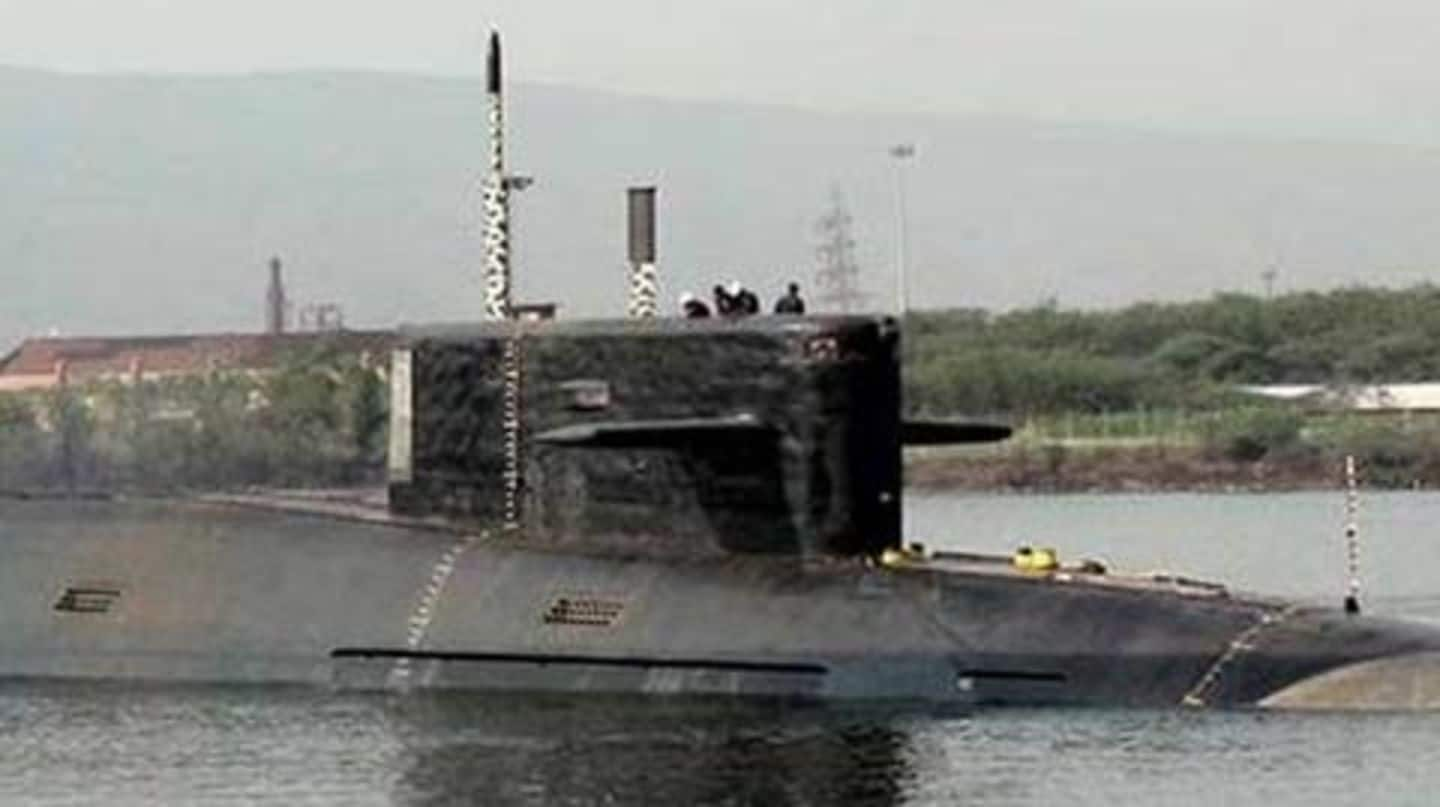
India's first nuclear ballistic missile submarine, Arihant, completes deterrence run
What's the story
India's first nuclear ballistic missile submarine, the INS Arihant, completed its first deterrence patrol on Monday, announced Prime Minister Narendra Modi.
Notably, the completion of INS Arihant's first deterrence patrol marked the establishment of India's nuclear triad by adding maritime nuclear strike capabilities in addition to land-based and air-based modes of nuclear delivery.
Here are the details.
Twitter Post
PM Modi congratulates the crew of INS Arihant
Dhanteras gets even more special!
— Narendra Modi (@narendramodi) November 5, 2018
India’s pride, nuclear submarine INS Arihant successfully completed its first deterrence patrol!
I congratulate all those involved, especially the crew of INS Arihant for this accomplishment, which will always be remembered in our history. pic.twitter.com/tjeOj2cBdX
INS Arihant
A brief introduction to the INS Arihant
The 6,000-ton INS Arihant, which had been under development for nearly three decades under a top-secret program, falls under the direct control of the Nuclear Command Authority headed by PM Modi.
The INS Arihant was launched in 2009, but was commissioned into the Indian Navy in August 2016 after extensive sea trials.
The submarine has a maximum strike range of 3,500km.
Strategic importance
The Arihant is a big boost for India's strike capabilities
The operational readiness of the INS Arihant marks a massive boost to India's defense capabilities.
Nuclear ballistic missile submarines are capable of firing nuclear-tipped missiles that have the potential to destroy entire cities from extremely long ranges.
Additionally, these submarines can remain undetected for long periods of time, allowing them to sneak close to coasts of enemy nations.
Nuclear triad
India, China to join US, Russia as full-fledged nuclear-triad powers
With maritime nuclear strike capabilities, India joins a small group of nations who are considered to be full-fledged nuclear triad powers with land, air, and maritime modes of nuclear delivery.
Up until now, only the US and Russia were considered to be full-fledged nuclear triad powers.
However, India and China are catching up fast, and their nuclear strike capabilities are almost at maturity.
Twitter Post
PM Modi says India's nuclear program aims to promote peace
India is a land of peace. Values of togetherness are enshrined in our culture.
— Narendra Modi (@narendramodi) November 5, 2018
Peace is our strength, not our weakness.
Our nuclear programme must be seen with regard to India’s efforts to further world peace and stability.